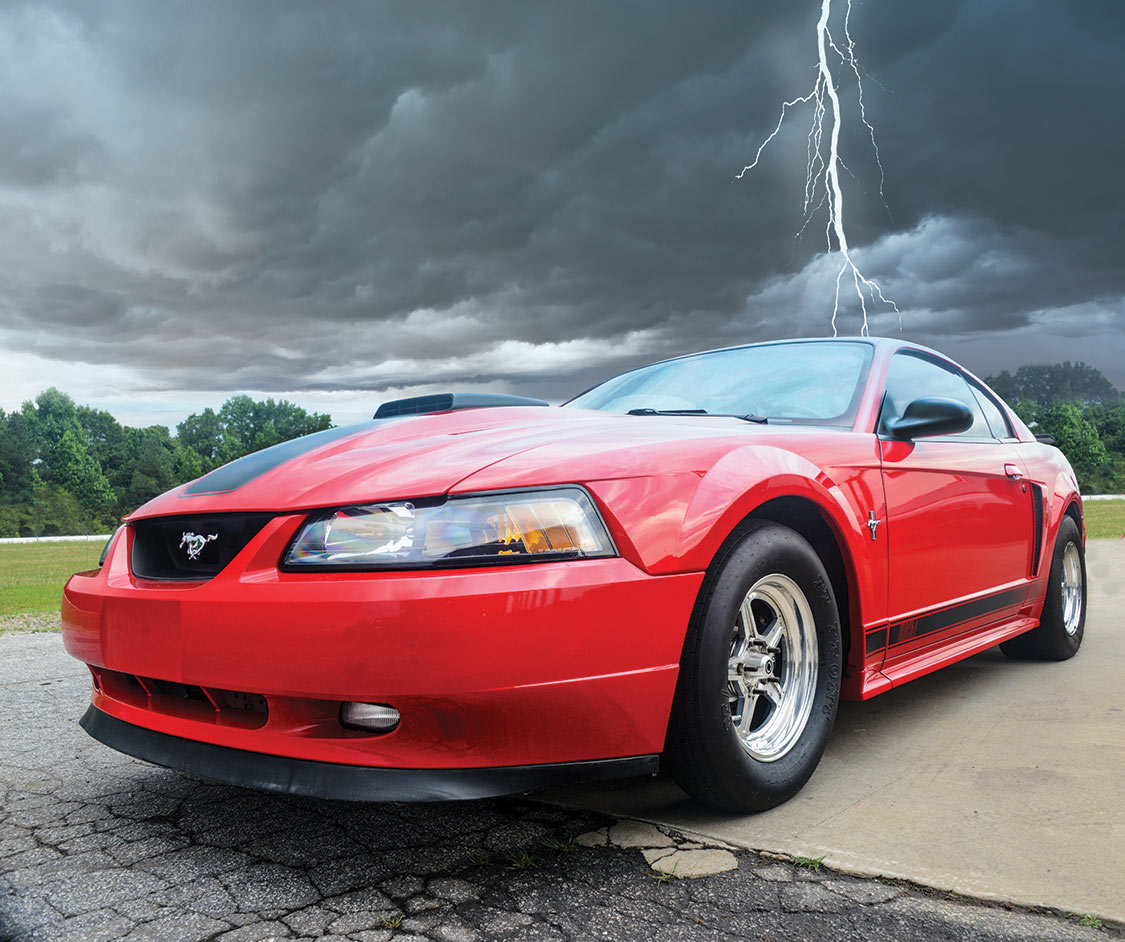 Titus Bloom
.
June 05, 2022
.
All Feature Vehicles
Titus Bloom
.
June 05, 2022
.
All Feature Vehicles

In its 11th year, Gary Winter’s 2003 Mustang Mach 1 received an upgraded clutch. In itself, that’s not remarkable. Clutches need to be replaced every now and then. That’s especially true if you’ve been working on the engine. If you increase torque and horsepower beyond factory specs, you will also need to upgrade your clutch.
A clutch job on a Mustang is not a difficult task if you have access to a lift and transmission jack. At MV Performance near Atlanta, the able Jason Carr completed a full clutch upgrade in around 2.5 hours.
“I was cutting the lights at 7800 rpm,” said Winter, “so we altered the rear gear ratio from 4.56:1 to 4.88:1. With the lower gear, we’re aiming to exit the quarter mile at 8300 rpm or 8400 rpm.”




The most significant points of the procedure are shown in this sequence of photos and captions, but the car’s background is also worth exploring. In 2003, Winter unexpectedly needed some new transportation and set off to buy a pickup truck, but came home with a new, red 4.6-liter Mach 1 Mustang instead. On his way to the sales office, he had caught a glimpse of the dohc 4-valve machine and changed his mind on the spot.
Under Winter’s care, the Mach 1 has accrued 76,000 miles. The car has graduated from being Winter’s daily driver, but it’s still active on the roads each month, making its way to car shows or to test and tune meets at local drag strips. Externally, the Mach 1’s appearance remains unchanged from stock, except for the Billet Specialty wheels. Underneath, however, it’s a different story.



In the engine bay, there resides a Ford Boss engine block. Winter had it bored and stroked at MV Performance, which increased the displacement from 4.6 liters (281 cu. in.) to 5.3 liters (324 cu. in.). The engine work increased power from the stock 305 hp at the flywheel to 430 hp. The induction was changed to include a Sullivan intake, and the factory computer was replaced with a Big Stuff3. That modification increased the engine’s rev range from 7000 rpm to 9000 rpm, and the engine picked up an additional 75 hp in the process.
At the rear, Winter still uses stock springs, but the car has been lowered and firmed up by the removal of one full coil from each corner. Also visible are Metco upper and lower control arms with Delrin bushings—Winter’s first batch of polyurethane bushings shattered. Moser manufactures the axles and the shocks are by Strange Engineering, who also provided the spool-style rear end.
Lower mass means a lower moment of inertia, which translates to faster response; that is, faster acceleration…as well as less wheelspin.




The stock transmission was incapable of fast shifting, so for nimble quarter-mile performance Winter replaced the original unit with a TKO 500, which attaches to a Quick Time bellhousing. Importantly, the transmission was sent out for face-plating, a process that results in rapid no-lift shifts during hard acceleration.
“I was cutting the lights at 7800 rpm,” said Winter, “so we altered the rear gear ratio from 4.56:1 to 4.88:1. With the lower gear, we’re aiming to exit the quarter mile at 8300 rpm or 8400 rpm.” During the latest upgrades, the Mach 1 received a Ram billet aluminum flywheel and Powergrip clutch assembly. A single-disc direct-fit arrangement, the 10.5-in. flywheel is lighter than the original by around 14 lb. Lower mass means a lower moment of inertia, which translates to faster response; that is, faster acceleration and deceleration as well as less wheelspin.
The increased clamping pressure of the new flywheel-clutch system accommodates power increases of up to 550 hp while maintaining light pedal operation.
Ram Clutches
(803) 788-6034
www.RamClutches.com
MV Performance
Winder, Georgia
(770) 725-7862
www.mvperformance.com
Share Link